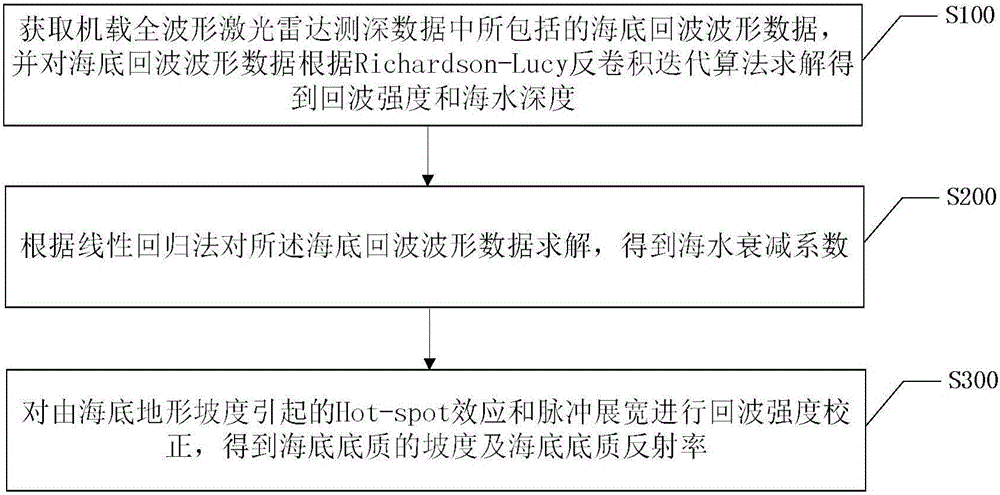Seabed sediment reflectivity extraction method and system for laser radar sounding data
A technology of laser radar and extraction method, applied in radio wave measurement systems, instruments, etc., can solve the problems of difficulty in extracting the reflectivity of the bottom of the seabed and the attenuation of laser beams
- Summary
- Abstract
- Description
- Claims
- Application Information
AI Technical Summary
Problems solved by technology
Method used
Image
Examples
Embodiment Construction
[0045] The present invention provides a method and system for extracting seabed substrate reflectance of laser radar bathymetry data. In order to make the purpose, technical solution and effect of the present invention clearer and clearer, the present invention will be further described in detail below with reference to the accompanying drawings and examples. It should be understood that the specific embodiments described here are only used to explain the present invention, not to limit the present invention.
[0046] Please refer to figure 1 , which is a flow chart of a preferred embodiment of the method for extracting the albedo of the seafloor substrate from lidar bathymetric data according to the present invention. Such as figure 1 As shown, the method for extracting the reflectivity of the sea bottom of the lidar bathymetric data comprises the following steps:
[0047] Step S100, obtaining the seabed echo waveform data included in the airborne full-waveform laser radar ...
PUM
 Login to View More
Login to View More Abstract
Description
Claims
Application Information
 Login to View More
Login to View More - R&D
- Intellectual Property
- Life Sciences
- Materials
- Tech Scout
- Unparalleled Data Quality
- Higher Quality Content
- 60% Fewer Hallucinations
Browse by: Latest US Patents, China's latest patents, Technical Efficacy Thesaurus, Application Domain, Technology Topic, Popular Technical Reports.
© 2025 PatSnap. All rights reserved.Legal|Privacy policy|Modern Slavery Act Transparency Statement|Sitemap|About US| Contact US: help@patsnap.com



